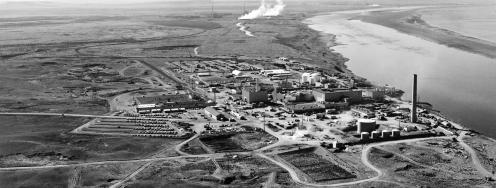The Nuclear Budget Battle Takes the Front Page
It is understandable that the American public generally doesn’t know much about nuclear weapons – how many there are, how much they cost, why we still have so many. The topic has not been “news” for most of the past fifteen years or so. Media attention on security issues instead gravitates toward the major crises of the day. Russia’s invasion of Ukraine, the fight against Islamic State in Iraq and Syria, the intermittent but predictable Israeli-Palestinian clashes.
Yesterday, though, nuclear weapons got some long-overdue attention. The front page of the New York Times had two main stories. A comprehensive expose on just how much our nation plans to spend on nuclear weapons sat prominently next to coverage of a massive climate change rally. The facts are that the United States is on track to spend in excess of hundreds of billions of dollars in just the next decade to buy new systems to deliver upgraded nuclear bombs under the guise of deterrence. But to deter who? Remember those other security headlines? Russian and Ukraine, Islamic State and Middle East strife – nuclear weapons have zero role in preventing or mitigating them.
The article, U.S. Ramping up Major Renewal in Nuclear Arms, and today’s editorial, Backsliding on Nuclear Promises, are critically important to decades-long policy choices our nation is about to make. The coverage was not an accident. It was the culmination of the work of many people and organizations, and Ploughshares Fund played an important role in it. Over the past three years Ploughshares Fund and our partners have worked to elevate awareness around nuclear weapons issues. We’ve helped policymakers and the public understand the staggering costs of these weapons systems. Interviewed for the article was Ploughshares Fund’s own Tom Collina. With twenty-five years in the field, Collina is a recognized authority on the nuclear weapons enterprise. He provided the authors with valuable insight on specific plans for new weapons systems, their estimated costs, and the reality that under current congressional spending limits, lawmakers simply can’t have it all.
The article also gives well-earned credit to the role of Ploughshares Fund’s grantee partners in educating the public and Members Congress about real cost of nuclear weapons. A 2012 Stimson Center study was the first to reveal that the government woefully underestimated the cost of maintaining nuclear weapons by at least $100 billion dollars over ten-years. Adopting Stimson’s accounting methodology, the non-partisan Congressional Budget Office (CBO) concluded that the United States will spend $355 Billion dollars on nuclear weapons in the next ten-years. The Monterey Institute’s Institute of International Affairs, The Trillion Dollar Nuclear Triad, study last year further debunked the Departments of Defense’s conservative cost projections. The Study’s co-author, Jeff Lewis cautioned that absent a critical review of the projects and programs earmarked for approval, “we are headed for a train wreck.”
Heightened awareness about US modernization plans has led to greater Congressional scrutiny. The delay of a new US Air Force-Navy so-called “interoperable warhead” and a new warhead for the planned Long Range Strike Bomber illustrate this new level of evaluation. The suspension of a billion dollar project to make more nuclear components for warheads is further evidence of an increased squeeze on the nuclear budget. Faced with rising costs and pressure from Ploughshares Fund’s budget campaign, the National Nuclear Security Administration ultimately scrapped its multi-billion dollar Plutonium facility at Los Alamos National Lab. The planned Uranium plant at Y-12 is likely next.
President Obama has a final opportunity in his Fiscal Year 2016 Budget to pair his ambitious 2009 Prague speech with concrete actions. Reigning back programs will not only save the US Treasury from the unaffordable “modernization mountain,” it is also the only means to make progress towards a “world without nuclear weapons.” The entry-into-force of the New START Treaty showed that there is no substitute for Presidential leadership in reducing the size and role of nuclear weapons. But that alone is not sufficient. Nothing in policy or politics can happen without public support. Ploughshares Fund and our partners will continue to work hard to educate the public, media and policymakers about these costly anachronisms of the Cold War. With your support we can retire relics of a bygone era—and in doing so—ending the danger posed by nuclear weapons.




